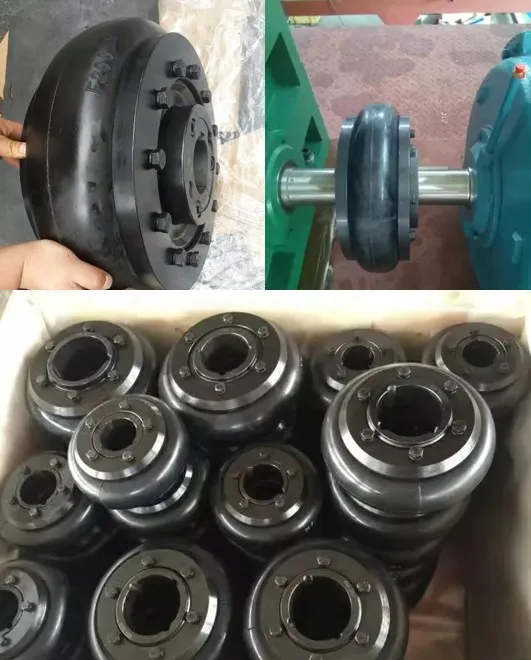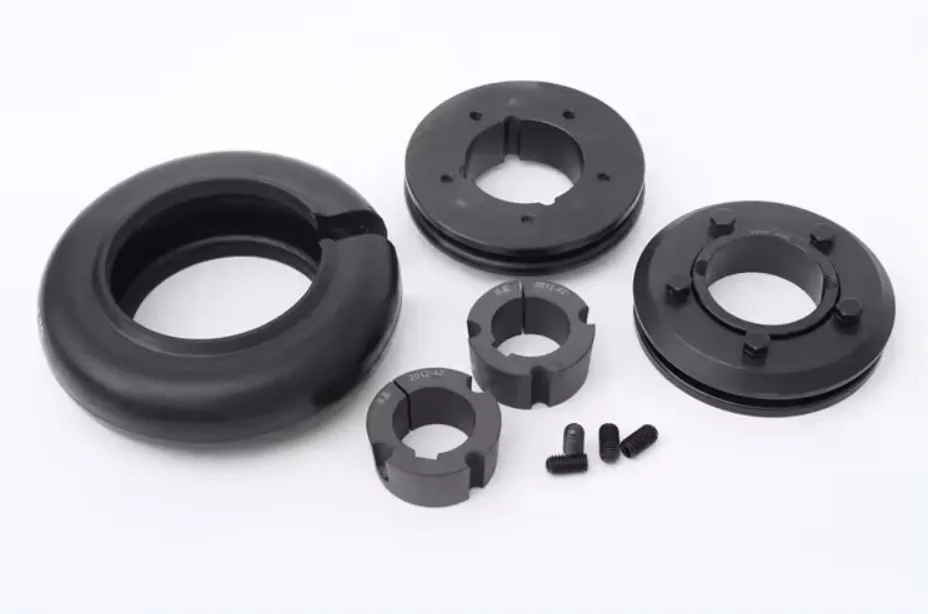1.5 Rubber Coupling
Introduction
A 1.5 rubber coupling is a type of flexible coupling that is commonly used in various industries. It is designed to connect two shafts, allowing for the transmission of power and torque while accommodating misalignment and reducing vibration. In this article, we will explore the features, benefits, and applications of the 1.5 rubber coupling.
Features of 1.5 Rubber Coupling
1. Durable Rubber Material: The 1.5 rubber coupling is made from high-quality rubber material that offers excellent flexibility and resilience. It can withstand heavy loads and provides long-lasting performance.
2. Torque Transmission Capability: This coupling is capable of transmitting high torque, making it suitable for applications that require efficient power transfer.
3. Misalignment Compensation: The 1.5 rubber coupling can compensate for angular, parallel, and axial misalignment between the connected shafts. It helps to reduce stress on the equipment and increase its lifespan.
4. Vibration Damping: With its rubber construction, this coupling effectively dampens vibrations and reduces noise levels, resulting in smoother and quieter operation.
5. Easy Installation: The 1.5 rubber coupling features a simple and straightforward installation process, saving time and effort during equipment assembly.
Applications of 1.5 Rubber Coupling
The 1.5 rubber coupling finds applications in various industries, including:
1. Industrial Machinery: It is widely used in machinery such as pumps, compressors, conveyors, and mixers, where it facilitates the transmission of power and compensates for misalignment.
2. Automotive: This coupling is employed in automotive systems, including engines, transmissions, and drivelines, to provide smooth power transmission and reduce vibrations.
3. HVAC Systems: It is utilized in heating, ventilation, and air conditioning systems to connect motors and fans, ensuring efficient operation and reducing noise levels.
4. Power Generation: The 1.5 rubber coupling is used in power generation equipment like generators and turbines to transmit torque and dampen vibrations.
5. Marine Applications: It is commonly found in marine propulsion systems, enabling smooth power transmission and compensating for misalignment caused by waves and water movements.

How to Install Rubber Coupling
Proper installation of a rubber coupling is crucial for its optimal performance and longevity. Follow these steps to install a rubber coupling:
1. Inspect the coupling and shafts for any damage or contamination.
2. Ensure that the shafts are clean and free of any debris.
3. Slide the rubber coupling onto one shaft, making sure it is properly aligned.
4. Apply a suitable lubricant to the mating surfaces of the coupling.
5. Slide the other shaft into the other end of the coupling, aligning it correctly.
6. Tighten the coupling bolts or screws evenly and gradually to the specified torque.
7. Check for any misalignment or binding after the installation, and make necessary adjustments if required.

Choosing and Customizing the Right Rubber Coupling
When selecting or customizing a rubber coupling, consider the following parameters and factors:
1. Torque Capacity: Determine the required torque capacity based on the application’s power requirements and operating conditions.
2. Shaft Size and Fit: Ensure that the coupling matches the shaft sizes and fits securely to prevent slippage or damage.
3. Misalignment Compensation: Evaluate the level of misalignment that the coupling needs to accommodate, such as angular, parallel, or axial misalignment.
4. Environmental Conditions: Consider the temperature, humidity, chemicals, and other environmental factors that the coupling will be exposed to.
5. Application-Specific Requirements: Take into account any specific requirements or constraints of the application, such as space limitations or regulatory standards.

About HZPT
HZPT is a modern enterprise located in Hangzhou, Zhejiang Province. We specialize in the research, development, production, and international trade of coupling products. Committed to our core values of integrity, unity, progress, and innovation, we aim to become a globally influential international group.
Our company offers a range of coupling products, including drum couplings, pin bush couplings, bellows couplings, universal couplings, star couplings, expansion couplings, membrane couplings, and tire couplings. With a complete and scientific quality management system, as well as our own technology development and testing department, we hold certifications such as CQC, ISO, and CE. We provide excellent sales service and technical support to more than a hundred cooperative enterprises, following the business philosophy of “people-oriented, customer-first,” and working together for mutual development.

If you are looking for high-quality, reliable rubber couplings, look no further than HZPT. Our products offer the following advantages:
1. Exceptional Durability: Our rubber couplings are made from top-notch materials, ensuring long-lasting performance and resistance to wear and tear.
2. Optimal Power Transmission: With their efficient design, our couplings enable smooth and reliable power transmission, minimizing energy loss.
3. Versatility: Our couplings are suitable for various applications and can accommodate different shaft sizes and misalignment conditions.
4. Vibration and Noise Reduction: By effectively damping vibrations, our rubber couplings contribute to a quieter and more comfortable working environment.
5. Customization Options: We offer the flexibility to tailor our rubber couplings to meet specific requirements, ensuring a perfect fit for your application.
In conclusion, HZPT is your trusted source for high-quality rubber couplings. We are committed to delivering superior products and excellent customer service. Contact us today to discuss your coupling needs and let us help you find the perfect solution.
How to Install Rubber Coupling
Proper installation of a rubber coupling is crucial for its optimal performance and longevity. Follow these steps to install a rubber coupling:
1. Inspect the coupling and shafts for any damage or contamination.
2. Ensure that the shafts are clean and free of any debris.
3. Slide the rubber coupling onto one shaft, making sure it is properly aligned.
4. Apply a suitable lubricant to the mating surfaces of the coupling.
5. Slide the other shaft into the other end of the coupling, aligning it correctly.
6. Tighten the coupling bolts or screws evenly and gradually to the specified torque.
7. Check for any misalignment or binding after the installation, and make necessary adjustments if required.

Choosing and Customizing the Right Rubber Coupling
When selecting or customizing a rubber coupling, consider the following parameters and factors:
1. Torque Capacity: Determine the required torque capacity based on the application’s power requirements and operating conditions.
2. Shaft Size and Fit: Ensure that the coupling matches the shaft sizes and fits securely to prevent slippage or damage.
3. Misalignment Compensation: Evaluate the level of misalignment that the coupling needs to accommodate, such as angular, parallel, or axial misalignment.
4. Environmental Conditions: Consider the temperature, humidity, chemicals, and other environmental factors that the coupling will be exposed to.
5. Application-Specific Requirements: Take into account any specific requirements or constraints of the application, such as space limitations or regulatory standards.

